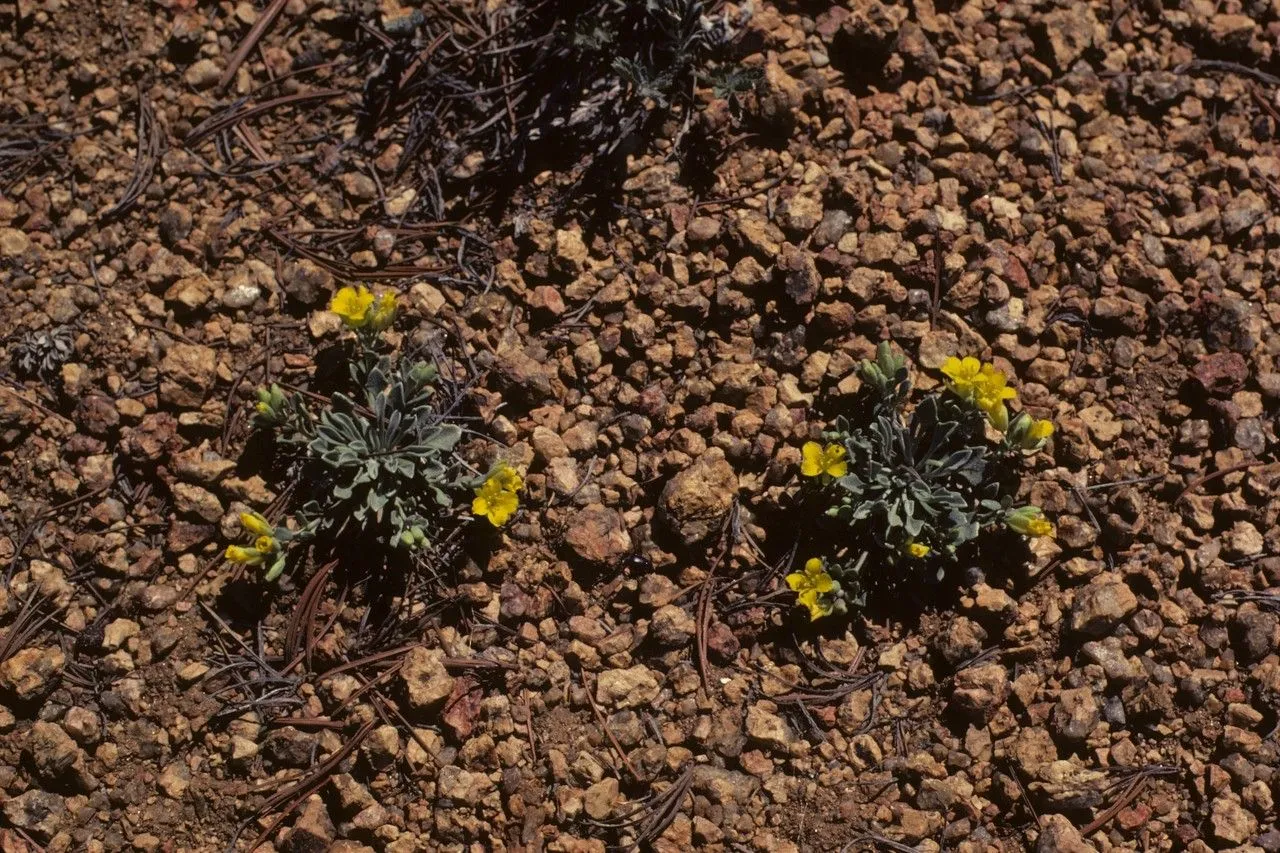
Author: Thunb.
Bibliography: Prodr. Pl. Cap.: 75 (1794)
Year: 1794
Status: accepted
Rank: species
Genus: Oenothera
Vegetable: False
Observations: Subarctic America to U.S.A.
The Hairy Evening Primrose, an enchanting botanical specimen, owes its introduction to the renowned botanist Carl Peter Thunberg, who first documented its existence in 1794 in Prodr. Pl. Cap.. This fascinating plant, known scientifically as Oenothera villosa, boasts a remarkable adaptability that spans from the chillier landscapes of Subarctic America to various regions within the United States.
Belonging to the diverse and vibrant family Onagraceae, the Hairy Evening Primrose embodies the quintessential elegance of the primrose family. Its defining feature – the soft and tactile hairs covering its surface – lends this plant both its common name and a unique textural appeal. Each hair seems meticulously placed, culminating in a soft, almost ethereal presence that distinguishes the Hairy Evening Primrose from its relatives.
The plant displays a wondrous array of yellow blossoms, predominantly blooming in the evening, hence its descriptive moniker. These blossoms unfurl as the sun descends, welcoming the dusk with a fresh array of delicate petals that seem to whisper the secrets of the night. Their evening blooming habit acts as a beacon for nocturnal pollinators, creating a dynamic interaction within its ecosystem.
Another aspect of Oenothera villosa deserving mention is its versatility in habitat. From the rugged terrains of Alaska to the temperate zones in America’s heartland, this primrose displays an impressive degree of ecological plasticity. This adaptability speaks volumes about its resilience and potential benefits for increasing diversity in both wild and cultivated gardens.
The Hairy Evening Primrose represents not just an aesthetic asset but a marvel of natural history, embodying resilience and delicate beauty. Its journey from the thorough documentation by Thunberg to becoming a beloved fixture in various landscapes underlines its perpetual allure.
Deu: graublättrige nachtkerze, weidenblatt-nachtkerze, weidenblättrige nachtkerze, wollige nachtkerze
Eng: hairy evening primrose, hairy evening-primrose, hairy yellow evening-primrose, villose evening primrose, western yellow evening-primrose
Fra: onagre de hongrie, onagre velue, onagre à feuilles de saule
Pol: wiesiołek wierzbolistny
Hun: magyar ligetszépe
Ces: pupalka vrbolistá
En: Hairy evening primrose, Hairy Evening-Primrose, Hairy eveningprimrose, Hairy yellow evening-primrose, Villose evening primrose, Western yellow evening-primrose
Cs: Pupalka vrbolistá
Fr: Onagre de Hongrie, Onagre velue, Onagre à feuilles de Saule
De: Graublättrige Nachtkerze, Weidenblatt-Nachtkerze, Weidenblättrige Nachtkerze, Wollige Nachtkerze
Hu: Magyar ligetszépe
Pl: Wiesiołek wierzbolistny
Taken Jun 21, 2020 by Peter Lamping (cc-by-sa)
Taken Jun 6, 2022 by Pons Ferré Josep (cc-by-sa)
Taken Jul 20, 2020 by memoriesmany (cc-by-sa)
Taken Jun 29, 2022 by Vladislav Scherbatykh (cc-by-sa)
Taken Jul 19, 2020 by Tobias Schiller (cc-by-sa)
Taken Aug 15, 1994 by Photoflora – Jean-Luc TASSET (©)
Taken Sep 7, 2022 by megan allsup (cc-by-sa)
Taken Aug 23, 2020 by rilla schulte (cc-by-sa)
Taken Jun 7, 2020 by frederico (cc-by-sa)
Taken Aug 25, 2022 by marion carre (cc-by-sa)
Taken Jun 13, 2022 by Alexander Baransky (cc-by-sa)
Taken Jan 1, 1900 by EOL − W. L. Wagner (cc-by-nc-sa)
Taken Jan 1, 1900 by EOL − Ripley, J.D. (cc-by-nc-sa)
Taken Jan 1, 1900 by EOL − W. L. Wagner (cc-by-nc-sa)
Taken Jan 1, 1900 by EOL − R. Fletcher (cc-by-nc-sa)
Taken Jan 1, 1900 by EOL − W. L. Wagner (cc-by-nc-sa)
Taken Jan 1, 1900 by EOL − W. L. Wagner (cc-by-nc-sa)
Taken Jan 1, 1900 by EOL − W. L. Wagner (cc-by-nc-sa)
Growth habit>: Forb/herb
Ph maximum: 7.5
Ph minimum: 7.0
Light: 8
Atmospheric humidity: 4
Soil nutriments: 5
Family: Myrtaceae Author: (F.Muell.) K.D.Hill & L.A.S.Johnson Bibliography: Telopea 6: 402 (1995) Year: 1995 Status:…
Family: Rubiaceae Author: Pierre ex A.Froehner Bibliography: Notizbl. Bot. Gart. Berlin-Dahlem 1: 237 (1897) Year:…
Family: Sapindaceae Author: Koidz. Bibliography: J. Coll. Sci. Imp. Univ. Tokyo 32(1): 38 (1911) Year:…
Family: Asteraceae Author: A.Gray Bibliography: Pacif. Railr. Rep.: 107 (1857) Year: 1857 Status: accepted Rank:…
Family: Fabaceae Author: Medik. Bibliography: Vorles. Churpfälz. Phys.-Ökon. Ges. 2: 398 (1787) Year: 1787 Status:…
Family: Aspleniaceae Author: (Cav.) Alston Bibliography: Bull. Misc. Inform. Kew 1932: 309 (1932) Year: 1932…